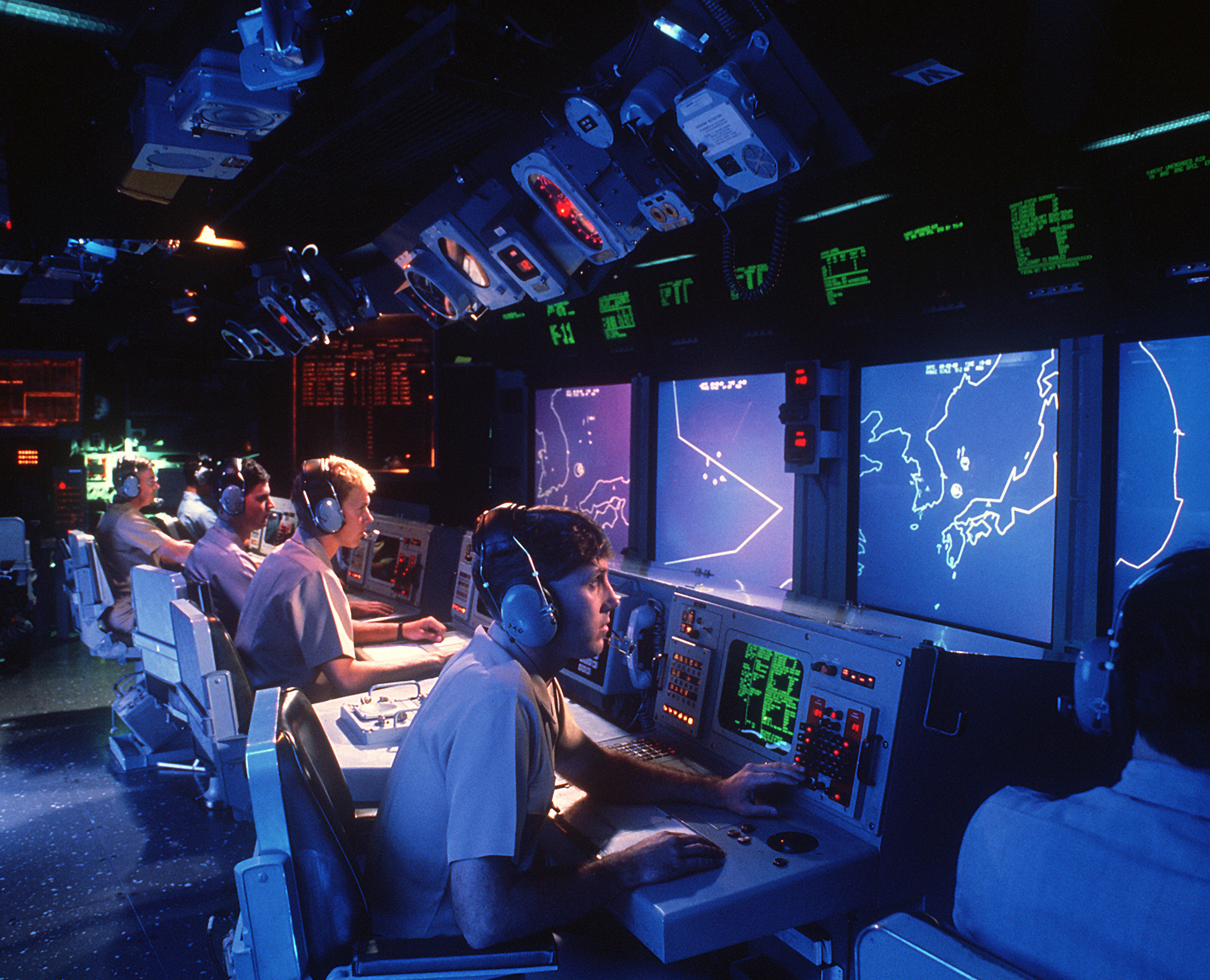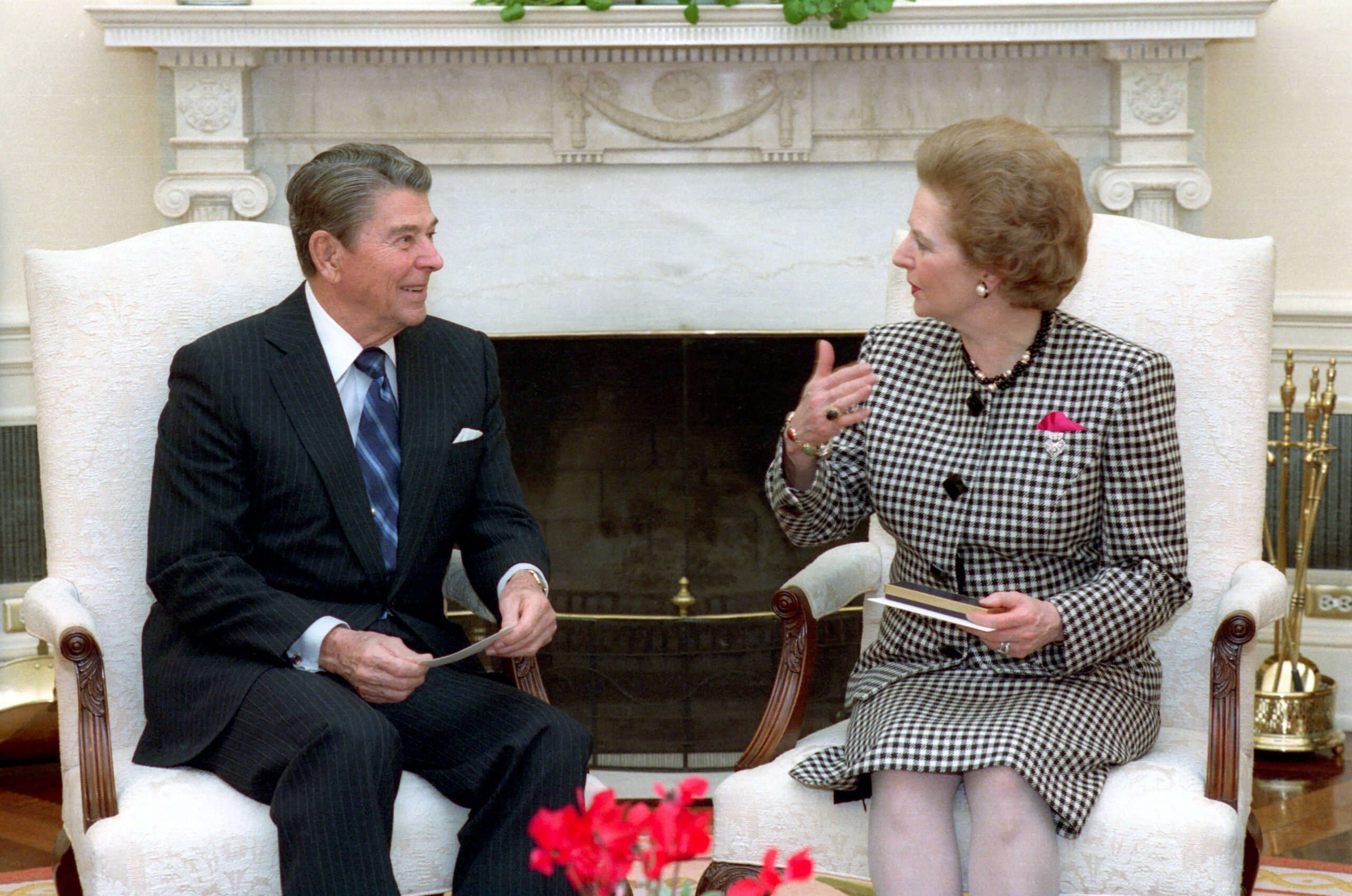Britain Helped US Cover Up Downing of Iranian Airliner
July 21, 2022
In 1988, a U.S. Navy warship shot down an Iranian airliner, killing all 290 civilians on board. Newly declassified files show how Margaret Thatcher’s government offered immediate support to the U.S. and assisted in the cover-up, John McEvoy reports.
https://consortiumnews.com/2022/07/21/britain-helped-us-cover-up-downing-of-iranian-airliner/
The combat information center aboard the guided-missile cruiser USS Vincennes in 1988. (Tim Masterson, U.S. Navy, Wikimedia Commons)
By John McEvoy
Declassified UK
The attack occurred during the Iran-Iraq war, which had begun in 1980 with Saddam Hussein’s invasion of Iran. The U.S. government
backed Saddam and sent warships to the Persian Gulf to support the Iraqi war effort.
One of those warships was the USS
Vincennes which, on 3 July 1988, fired two missiles at Iran Air Flight 655 while it was making a routine trip to Dubai.
Washington claimed the U.S. Navy had acted in self-defence, but this wasn’t true. The plane had not, as the Pentagon
claimed, moved “outside the prescribed commercial air route,” nor had it been “descending” towards the
Vincennes at “high speed.”
The U.S. thus shot down a civilian airliner, and haphazardly
tried to cover it up. Some 66 children were among the 290 civilians killed.
‘No Other Government’
On March 2, 2000, U.K. Foreign Secretary Robin Cook
met with U.S. General Colin Powell, who had served as U.S. President Ronald Reagan’s national security adviser between 1987 and 1989.
Powell “spoke frankly” throughout the discussion, leading Cook to request that the U.S. general’s “confidence… be strictly protected,” according to the newly released files.
In particular, Powell recalled that, after the U.S. shot down Flight 655, Thatcher’s private secretary for foreign affairs, Charles Powell, “had rung immediately from Downing Street to ask what the Americans wanted the British Government to say.”
The British government thus offered immediate support to the U.S., despite it having killed hundreds of civilians, most of whom were Iranian citizens.
To this end, Powell remarked how “America could count on no other government to behave like that.”
Powell would go on to become President George W. Bush’s secretary of state, in which role he
deceptively pushed for the invasion of Iraq in 2003.
Staunchest Defender
President Ronald Reagan and Prime Minister Margaret Thatcher in the Oval Office, 1988. (White House, Wikimedia Commons)
In the weeks following the attack, Thatcher stood out as Reagan’s staunchest defender. “You cannot put navies into the gulf to defend shipping from [Iranian] attack without giving them the right to defend themselves,” she
declared
In private correspondence with Reagan, Thatcher even
speculated on the positive implications of the attack, writing that: “The accident seems at least to have helped bring home to the Iranian leadership the urgent need for an end to the Gulf conflict.”
As journalist Solomon Hughes
wrote in
The Morning Star, the British Foreign Office also developed a “line to take” which was consistent with Thatcher’s public support of the U.S.
For instance, the Foreign Office emphasised that “the USS Vincennes issued warnings to an approaching unidentified aircraft but received no response,” and stressed that the U.S. was responding to “an Iranian attack.”
The Foreign Office
knew it was isolated in its support for the U.S. An internal memo written in July 1988 noted that “only the U.K. included a reference to the [U.S.] right to self defence, thereby attracting criticism from Iran and other countries.”
Eight years later, in 1996, the U.S. government
paid Iran $131.8 million in compensation for the attack, and President Bill Clinton expressed “deep regret” over what had happened.
However, the U.S. government has never formally
apologised for the attack and the captain of USS
Vincennes was
awarded the Legion of Merit for “exceptionally meritorious conduct in the performance of outstanding service.”
Some believe Iran
paid terrorist groups to bring down an American airliner in retaliation. Five months after the crash, Pan Am flight 103 exploded over Lockerbie in Scotland, killing 270 people.
John McEvoy is an independent journalist who has written for International History Review, The Canary, Tribune Magazine, Jacobin and Brasil Wire.
This article is from Declassified UK.











